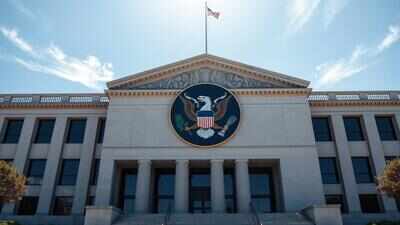ARTICLE AD BOX

In American education, the weight of history often collides with the urgency of the present. The nation’s public schools stand at a critical juncture, grappling with flagging academic outcomes even as they are asked to prepare a generation for democratic stewardship and global competitiveness.
The federal government, faced with grim markers such as the latest National Assessment of Educational Progress (NAEP) scores, is moving to reshape its funding priorities in ways that underscore both ideological convictions and pragmatic concerns.At the center of this recalibration is the US Department of Education, which has announced an unprecedented redirection of resources into charter schools, Historically Black Colleges and Universities (HBCUs), Tribally Controlled Colleges and Universities (TCCUs), and civics education.
By reallocating funds away from what it deems ineffective or discriminatory programmes, the Department is aiming to redefine the contours of federal support—placing emphasis on choice, heritage, and the promise of equity through merit-based advancement.
Record investment in Charter schools
The largest share of this shift is a record $500 million infusion into the Charter Schools Program for fiscal year 2025, a move framed as both a corrective measure and a bold endorsement of parental choice.
Coming on the heels of discouraging NAEP data showing deep stagnation in reading, mathematics, and science achievement, the investment signals the Trump administration’s conviction that competition and innovation in schooling remain central to revitalising outcomes.
Elevating HBCUs and TCCUs
Equally significant is the Department’s one-time, historic support for HBCUs and TCCUs. The allocations—$1.34 billion for HBCUs and more than $108 million for TCCUs—represent staggering increases of 48.4 percent and 109.3 percent respectively over anticipated levels according to official data, underscoring a renewed recognition of these institutions’ roles as engines of mobility and cultural preservation.
In the words of Education Secretary Linda McMahon, such funding is intended to honor “historic contributions to improving education and opportunity” while dismantling vestiges of racially discriminatory programming.
Civic renewal ahead of the semiquincentennial
The announcement also carries symbolic weight in the civic domain. With the Semiquincentennial of the United States approaching in 2026, the Department has pledged over $160 million to American history and civics initiatives.
This is designed not only to amplify national pride but also to address a crisis of civic literacy, evident in surveys showing declining awareness of democratic institutions among young Americans.
The planned seminars and grants have already drawn applications from more than 100 organizations, reflecting broad interest in reasserting civic knowledge as a cornerstone of the curriculum.
A divisive yet defining reallocation
Critics are certain to debate whether redirecting funds in this manner reflects a genuine strategy for closing achievement gaps or an ideologically driven restructuring.
Supporters, however, argue that it places federal dollars squarely behind institutions and programmes with demonstrated impact. Either way, the announcement is a definitive marker of the Trump administration’s educational vision: choice-driven, heritage-focused, and unapologetically committed to reordering the federal role in schooling.
The stakes for America’s future
As the nation braces for another chapter in its long struggle over how to educate its citizens, the scale of these investments leaves little doubt. Washington has placed its bets on charter growth, institutional heritage, and civic renewal. Whether those wagers yield the transformation officials promise may determine not just the trajectory of American education, but also the resilience of the democratic experiment itself.



.png)
.png)
.png)
















 2 hours ago
5
2 hours ago
5









 English (US) ·
English (US) ·